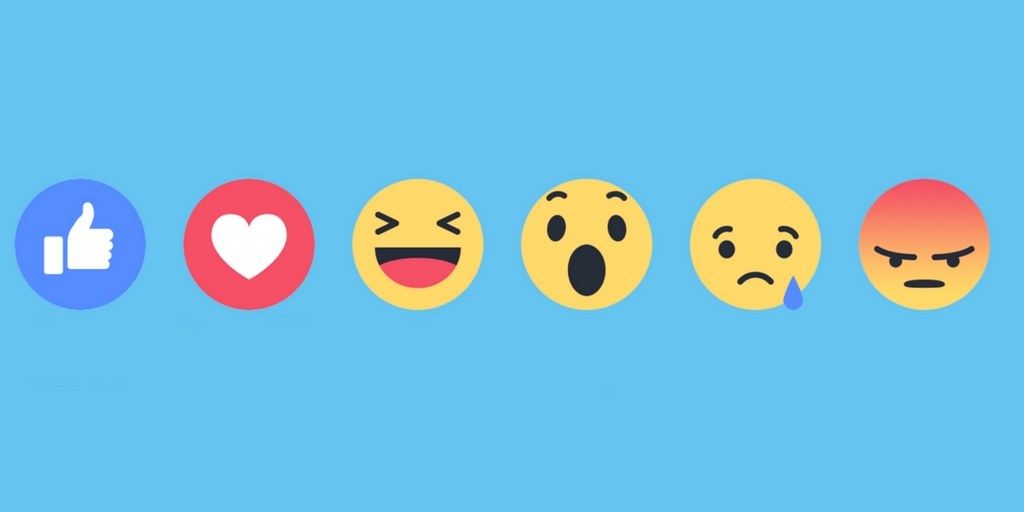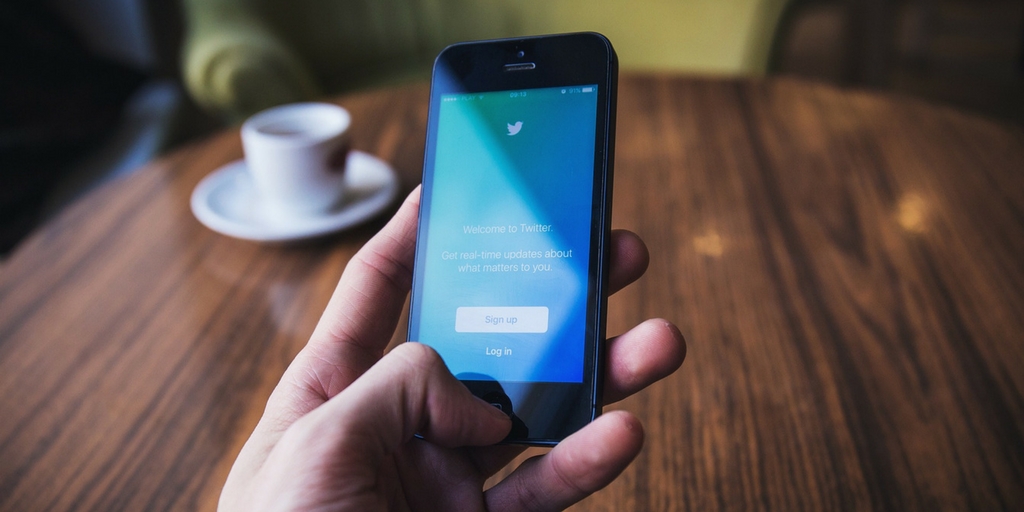
by Fronetics | Mar 27, 2017 | Blog, Content Marketing, Marketing, Social Media, Supply Chain
Here are the major headlines happening in social media news, specially curated for the supply chain, as of March 2017.
It’s not easy keeping pace with the latest happenings in the constantly evolving social media landscape — but it’s a must for your business. To help keep you up to date, here’s our monthly rundown of social media news for the supply chain.
Facebook algorithm ranks reactions higher than likes
Facebook announced earlier this month that it has tweaked its algorithm so that reactions “will affect post ranking slightly more than Likes.” The company cited its finding that reactions are an “even stronger signal” of what content users would like to see, but clarified that all reactions will continue to be weighed equally to one another.
YouTube introduces YouTube TV
After last month’s expansion of mobile live streaming and launch of super chat, the video juggernaut has now introduced YouTube TV, “with about 40 networks onboard to stream their live broadcasts and cable feeds to its subscribers.” The company and participating networks are set to sell ad inventory and share revenue, and the service will be based on subscriptions.
Google launches Meet by Google Hangouts
This one could be big for your business’ internal operations. Meet by Google Hangouts is a new video conferencing application designed for HD video meetings, joining Google’s lineup of business products known as G Suite. The product is “aimed at making it easy to access these calls while on the go, including dial-in numbers for those who are traveling, links you can join with just a click, and integration with Gmail and Calendar for G Suite users.”
Facebook globally launches Messenger Day
The company has launched a new way to share photos and videos “as they happen” in the Messenger app. Be sure to check out this Social Media Examiner post on how to use this new feature to market your business.
Twitter introduces analytics for Twitter Moments
The company has announced that analytics for Moments are now available to all Twitter users, allowing publishing partners and brand advertisers to track their content’s performance and gather insights on post interaction.
LinkedIn adds profile photo filters and editing tools for mobile
LinkedIn has introduced “a quick and easy way to enhance” profile photos with editing and filters right in its mobile app. Users can now “crop and edit the brightness, contrast, saturation, and vignette,” as well as choose from filters to enhance their profile photos.
Related posts:

by Fronetics | Mar 14, 2017 | Blog, Content Marketing, Marketing, Social Media, Strategy
Keep these best practices in mind when determining how often to post to social media.
Creating valuable, relevant content in a strategic and consistent manner creates demand for your products and services and drives profitable customer action. But as BuzzFeed’s Jonathan Perelman said, “Content is king, but distribution is queen and she wears the pants.”
It’s not enough to just create interesting and pertinent content; you have to put it out there to reach your target audience. Moreover, the content needs to be delivered consistently over time, at the right time, and in the right place.
With social media networks changing daily, it’s hard to keep up with where to distribute content, much less how often. Countless studies have attempted to solve the social-media-frequency equation. And while audiences vary across industries, best practices give us some general guidelines.
Here’s our assessment of social media posting frequency.
Twitter: 40 per day*
*Big caveat here: 40 tweets per day is what we’ve found works for us and most of our clients. Let me explain.
Socialbakers suggests that posting to Twitter three times per day is the ideal frequency for brands. Buffer posts to Twitter 14 times per day. Fronetics happens to tweet 40 times per day. So last spring, after seeing the Socialbakers and Buffer stats, we conducted a month-long experiment to see how dropping our posting frequency closer to their benchmarks would affect our engagement.
As we’ve written about before, it wasn’t pretty. We confirmed that our engagement, web traffic, lead generation, and other key performance indicators are at optimal levels when we tweet 40 times per day.
Your company, or your marketing partner, should conduct due diligence and determine what the right frequency is for your business. Yes, you may realize a significant decline in engagement in ROI during your experiment. On the other hand, you may realize an increase in engagement and ROI — captured with lower output in terms of time and resources.
Facebook: 1 per day
Most companies find that posting 1 time per day is their sweet spot for most social media networks. Facebook is no exception: The network’s algorithm values quality over quantity, so the more engaged your followers are with your content, the more likely they are to see your posts. This also means that posting content that does not facilitate engagement can actually decrease the likelihood that followers will see your posts.
One sure way to encourage disengagement is by overwhelming your audience. We all have that friend or company we follow that posts too much — don’t be like that person.
Remember that the lifespan of a Facebook post (about 5 hours) is significantly longer than that of a tweet. So you don’t need to provide a constant stream of content to get your audience’s attention. Your focus should be distributing the most relevant, interesting content you can, at a time when most of your audience will be on Facebook.
Instagram: 1-2 per day
There’s an unwritten rule among Instagramers that a user shouldn’t post more than once per day. We generally agree for the same reason we don’t think brands should post more than once a day to Facebook: Don’t overwhelm your audience because the lifespan of your posts is pretty long. In fact, a Union Metrics study found that many Instagram posts continue to receive engagement for days — even weeks — after posting.
Most brands end up posting 11-20 posts per month. If you focus on compelling images with strategic messages, that’s probably a good benchmark to stick with. It’s important to note, however, that another Union Metrics study suggests posting consistency is more important than frequency. Again, taking the time to test the Instagram posting frequency that works best for your business is a worthwhile endeavor.
LinkedIn: 1 per day
A more formal and technical social media network, consider LinkedIn a platform for business-related content. Don’t post here more than once per day — and consider posting only during the workweek. Many professionals don’t check LinkedIn on the weekends, and your content could easily be missed.
Buffer reports that posting 20 times per month (once a workday) allows companies to reach 60% of their audience. To provide the most value for your LinkedIn followers, content should be less promotional and more heavily focused on industry-wide trends and insights.
At the end of the day, optimal posting frequency for your company rests heavily on the audience you want to reach. Experimenting with different social media networks and posting frequencies will give you greater insight into your ideal distribution approach. With these best practices as a guide, let your own analysis be your guide. Maintaining a dynamic and fluid posting strategy will ensure that your social efforts drive followers to action, rather than drive them away.
Related posts:

by Fronetics | Jan 19, 2017 | Blog, Content Marketing, Data/Analytics, Marketing, Social Media, Strategy
The chances are that your company is not tweeting as often as it should.
Each second around 6,000 tweets are tweeted. Each minute over 350,000 tweets are tweeted. The median lifespan of each of these tweets is just 18 minutes. After 18 minutes of being live, the chance of someone seeing your tweet is very low. The chance of someone interacting with that tweet — even lower.
Given the large volume of tweets and the short lifespan of each tweet, how often should you tweet?
To get the most value out of each tweet, tweet around five times each day. To get the most value out of your company’s Twitter presence as a whole, tweet up to 30 times per day.
At Fronetics, we recommend focusing on getting the most value out of your company’s twitter presence as opposed to getting the most value out of each tweet.
When developing your Twitter strategy, here are a few things to keep in mind:
Timing is everything.
Identify the time of day most of your followers are active and what time of day your tweets receive the highest level of engagement. Followerwonk and Tweriod are two tools you can use to conduct this analysis. Rival IQ takes the analysis one step further and shows you when your competitors are tweeting and when they are realizing their highest level of engagement.
It is important to conduct this analysis on a regular basis and to adjust your strategy accordingly.
Be relevant. Be strategic.
Every single tweet you send should be relevant and should fit within your strategic goals and objectives.
Don’t be annoying.
Tweeting when your followers are active and when you have the highest levels of engagement is important, but don’t go overboard. For example, if you learn that 10 a.m. and 2 p.m. are the best times of day for your company to tweet, do not schedule all 30 of your tweets to go live at those times.
Be creative.
Don’t tweet the same tweet over and over and over again. It’s ok to share the same article a few times, but change up the image and/or the tweet to make it fresh.
Be visual.
Tweets with images get more engagement than tweets without images. Analysis by Buffer found that tweets with images receive:
- 150% more retweets
- 89% more favorites
- 18% more clicks
Be realistic.
Determine what you can realistically do on a consistent basis. If you can only commit to tweeting 5 times per day, stick with that. It is better to have strategy that you can execute than to have a strategy that cannot realistically be executed.
Finally, remember you don’t need to go it alone. Tools such as Buffer, HootSuite, Sprout Social, and HubSpot allow you to schedule tweets. Scheduling tweets makes it easier to tweet more often so that you can realize the value of a Twitter strategy.
Related posts:

by Fronetics | Jan 11, 2017 | Blog, Current Events, Marketing, Social Media
Learn about LinkedIn’s makeover, the parade of apps joining the live video trend, and more social media news for supply chain marketers.
As part of our ongoing series informing supply chain marketers about the latest updates and trends on social networking platforms, here is the January 2017 edition of social media news.
LinkedIn gets a new look
If you’ve signed onto LinkedIn lately and noticed everything looks a little different, you’ve experienced the new LinkedIn. The latest version should make it easier to find new contacts, interact with connections, and write posts, but it may take some getting used to. Social Media Examiner’s What Marketers Need to Know guide can help you navigate all the new features and organization.
Instagram rolls out live video
Following the massive success of Facebook Live, Instagram has introduced a live broadcasting tool within its Stories feature, now available for all U.S. users. Live videos disappear after they finish running. Reportedly, the Explore tab will feature a “top live” section so users can browse popular broadcasts as they are happening.
Twitter adds live broadcast feature
Twitter, too, joined the live video game by introducing #GoLive, powered by Periscope. Within the Twitter app for iOS or Android, users can tweet live video, while followers on Twitter and Periscope can join, comment on, and send hearts to the broadcast. Read more
Facebook introduces Live 360
Facebook announced the impending arrival of Live 360 for all Pages and Profiles sometime later this year. Combining the experiences of live broadcast with 360 video, the new feature will “[transport] people into new experiences — right as they happen.”
Twitter will pare down Vine to Vine Camera
Contrary to previous reports, Twitter will not completely shut down the video app Vine, but instead dress it down to a camera app called Vine Camera. Users will still be able to create 6-second looping videos and post them directly to Twitter or save them to their phones. Read more
Instagram introduces Saved Posts
Users of the Instagram 10.2 app for iOS or Android are now able to save posts from other users in their own private collections. Instagram has added a small bookmark icon on the bottom-right-hand side of each photo, which allows users to pin that image to their Saved Posts board. This board is not visible to other users, but individuals can access their Saved Posts at any time. Read more
Related posts:


by Fronetics | Jan 5, 2017 | Blog, Content Marketing, Logistics, Marketing, Social Media, Supply Chain
Turn to these 7 Twitter accounts for news, insights, and thought leadership in the supply chain space.
Twitter is a platform for socializing, entertainment, breaking news, lead prospecting, and much more. But Twitter is only as useful as the people you follow. So how do you choose between the 317 million monthly active users?
We compiled our list of the must-follow Twitter accounts for the supply chain professional in 2017. These users and companies have a lot to offer in terms of news, insights, and thought leadership. They also are active posters, meaning you’ll see frequent content from them, and are listed in no particular order.
Are you following these 7 Twitter accounts for supply chain thought leadership?
Tania Seary was recently named “Influencer of the Year” by Supply Chain Dive and is an active poster on all things relating to supply chain logistics, with a particular commitment to procurement development. Based in London, Seary is the founder of Procurious, The Faculty, and The Source Australia.
Lora Cecere is the founder of Supply Chain Insights, an industry research group. A prolific writer, Cecere focuses on the changing face of enterprise technologies. Her current research interests include the digital consumer, supply chain sensing, demand shaping and revenue management, market-driven value networks, accelerating innovation through open design networks, the evolution of predictive analytics, emerging business intelligence solutions, and technologies to improve safe and secure product delivery.
Steve Banker is a veteran supply chain analyst who writes for Logistics Viewpoint and Forbes. Based outside of Boston, Banker heads up the Supply Chain & Logistics consulting team at ARC Advisory Firm. His technology focus areas include transportation management, managed transportation services, warehouse management, and supply chain planning.
Procurious is a business network and resource for progressive procurement professionals founded by Tania Seary. Content ranges from networking and career advice to thought leadership pieces and industry news.
Logistics Management offers editorial content aimed at executives, managers, and other professionals in the logistics and supply chain industries. It recently hosted virtual conference on streamlining logistics and supply chain operations.
Supply Chain Dive is a DC-based news aggregate that offers daily coverage of shipping / logistics / tracking, inventory management, storage / warehousing, freight & fulfillment.
Logistics News is an independent, global source for news related to transport, shipping, trucking, or logistics.
Are you following us? @fronetics distributes original content and curates interesting, informative, and relevant content from other supply chain publishers across the Twittersphere and beyond.
Who are your must-follow Twitter accounts?
Related posts:







